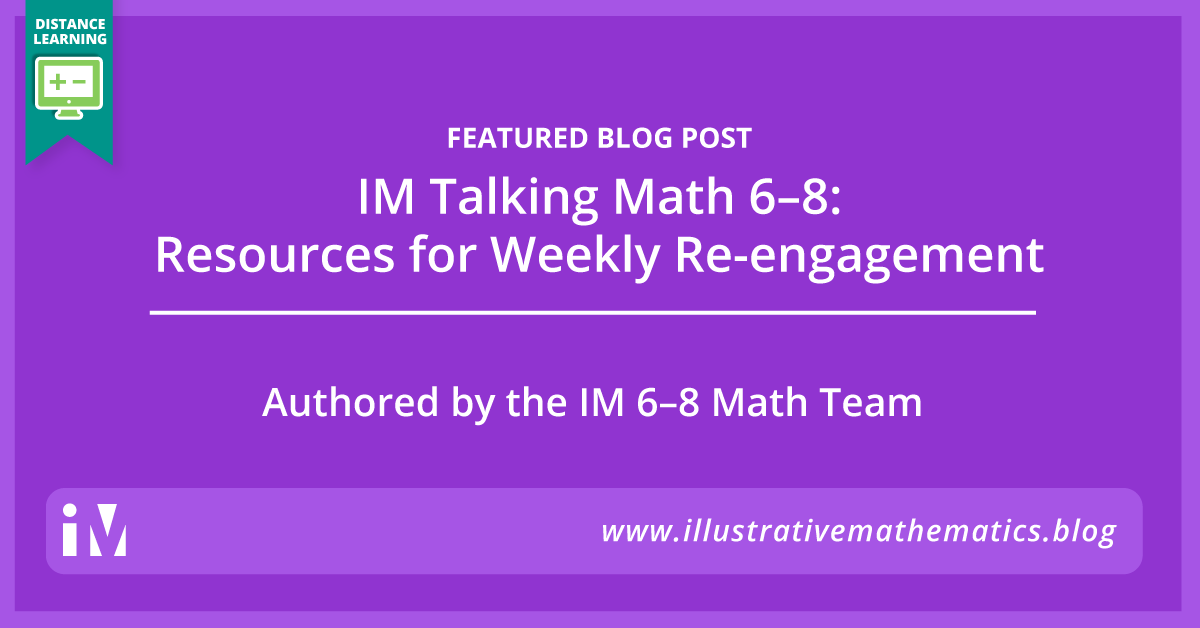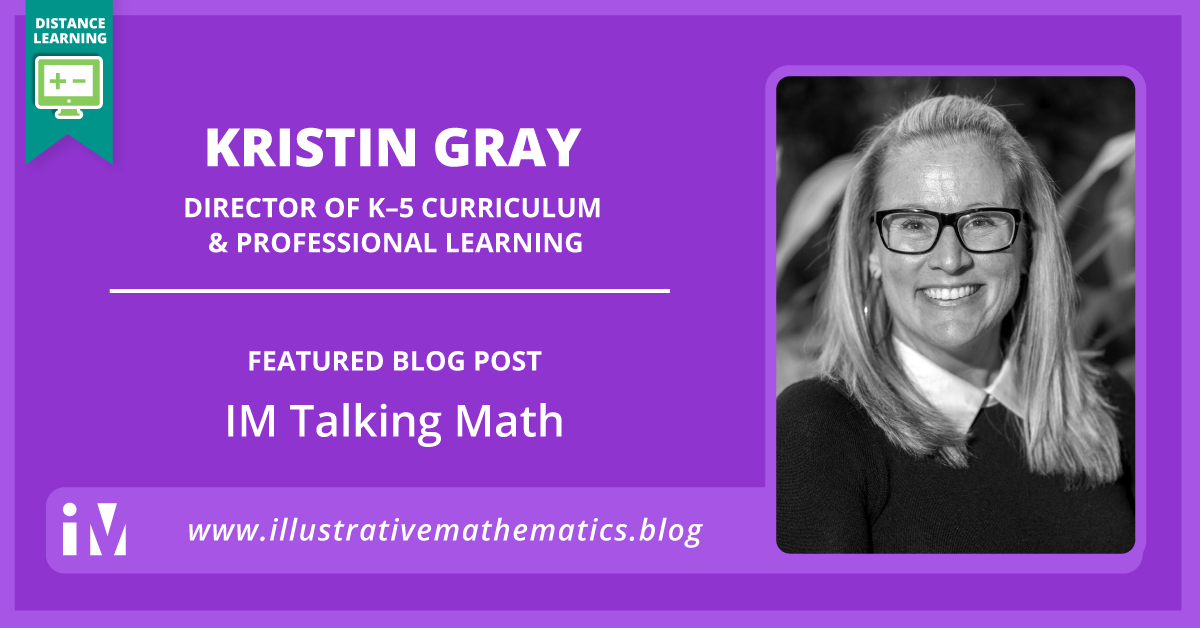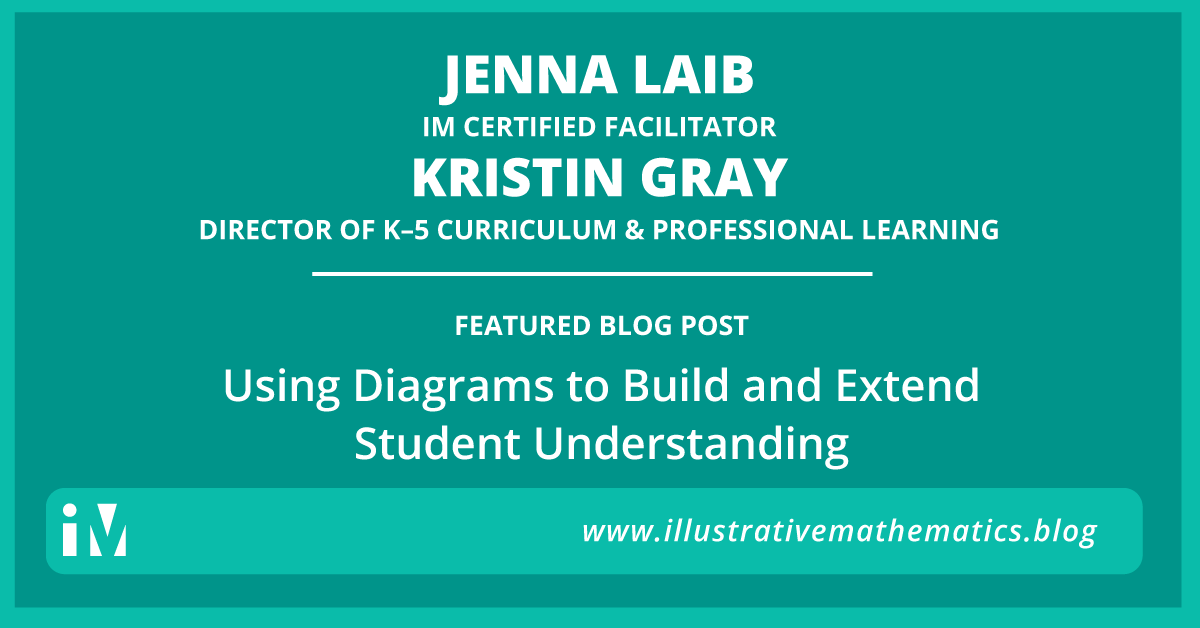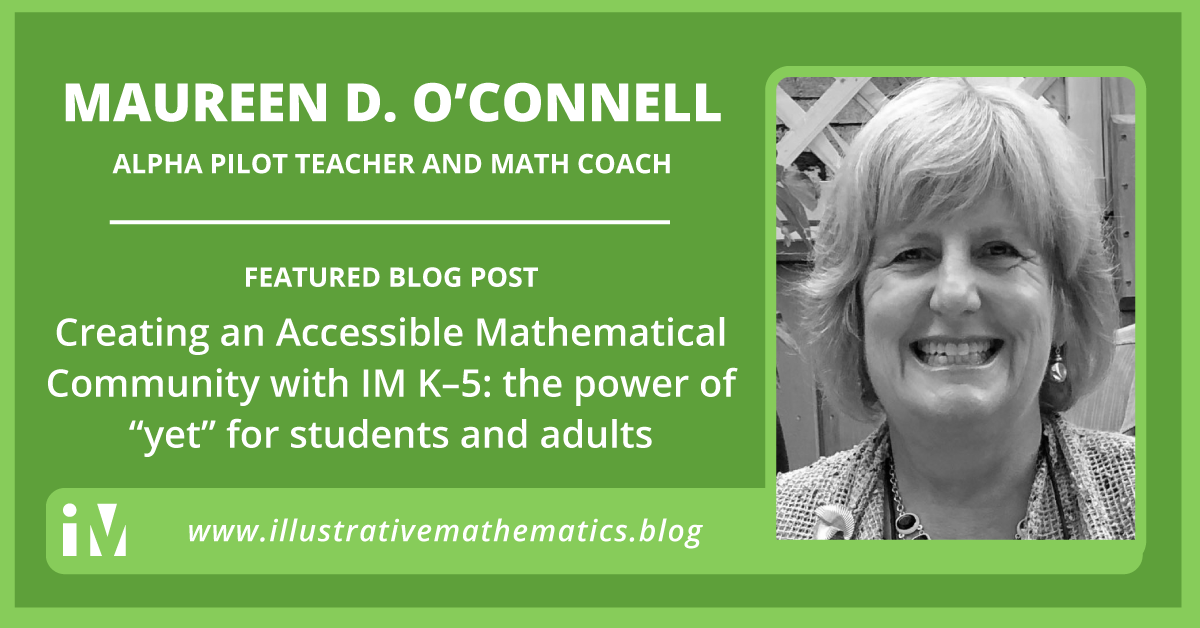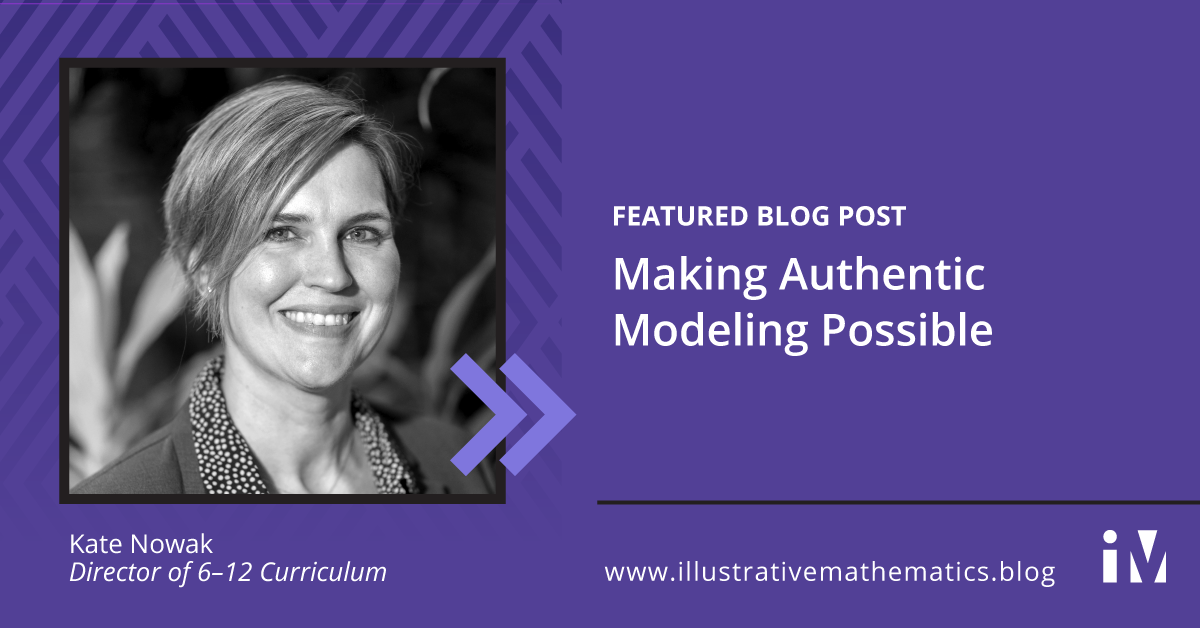IM Certified® Blog
IM Talking Math 6–8: Resources for Weekly Re-engagement
By IM 6–8 Math Team This week, IM is launching a new resource to support students and teachers with distance learning. Each week we will publish an open-ended prompt or image that invites math conversation, and a series of...
IM Talking Math
By Kristin Gray Most importantly, I hope everyone is taking care of themselves, their families, and others as much as they are able to during this time. With schools and districts pushing instruction online with a quick...
Planning for Learning in Spring of 2020
Some schools are sending home printed packets and establishing teacher office hours by phone. Some are conducting their regular class schedule, but online. And lots are doing something in between. We understand that it is...
Using math to make decisions in today’s pandemic
By William McCallum At Illustrative Mathematics, our mission is to create a world where all learners know, use, and enjoy mathematics. This is not just an idle wish, one that we have because we love mathematics. Sometimes...
Aggregated Support for the IM Math Community in Spring 2020
We want to share our deepest gratitude for the work each of you has been doing to protect yourselves, your families, your students, and your school communities, as you face hard decisions about how to support students while...
Links to Resources for Shifting Instruction Online
First and most importantly, take care of yourself, your family, and your students. That might not look like doing math, or it might. To the extent that it’s useful, we have curated this list of resources recommended by our...
Links to Math Resources for Caregivers
Here is a collection of links the content team here at IM has used with our own students and kids to start mathematical conversations, play math games together, explore new topics, come up with projects, and have fun. There...
Shifting Practices: Helping Everyone—from Students to Administration—Find their Voice in the Math Classroom
It was easy to say yes! By Crystal Magers Last spring, I was approached by our Math Coordinator and asked about piloting a new math program. I knew my staff was ready for building-wide consistency and we were ready to try...
K–5 Curriculum Design Features that Support Equity and Inclusion
By Dionne Aminata Before I joined the K–5 curriculum writing team at IM, I was a K–8 regional math content specialist for a public charter organization that largely consisted of Title I schools, or schools receiving federal...
Rethinking Instruction for Lasting Understanding: An Example
By Kate Nowak How do we help our students build mathematical understandings that endure past the unit test? If we want students to construct strong, reliable bases of mathematical knowledge, our instruction needs to do more...
When is a number line not a number line?
By William McCallum The number line is a seemingly simple object: a straight line with two points marked 0 and 1. Those two points are the seeds of great complexity, however. Whole numbers are located at positions marked...
The Art of Reflection
“In times of stress, the best thing we can do for each other is to listen with our ears and our hearts and to be assured that our questions are just as important as our answers.” —Mr. (Fred) Rogers By Kaneka Turner We are...
Ratio Tables are not Elementary
By William McCallum In grade 3, as students start to learn about multiplication, they think about products like 6 x 7 in terms of equal groups. 6 x 7 is the number of things when you have 6 groups with 7 things in each...
Could you—or someone you know—be our newest IM Certified Facilitator? The Critical Role of IM Certified Facilitators.
“What I find distinguishes IM is that IM Certified Facilitators are uniquely supported by the IM authoring team to ensure the integrity of the curriculum remains intact.” By Kiana Porter-Isom I was always interested in...
Using Diagrams to Build and Extend Student Understanding
By Jenna Laib and Kristin Gray Take a moment to think about the value of each expression below. $\frac{1}{4}\times \frac{1}{3}$ $\frac{1}{4}\times \frac{2}{3}$ $\frac{2}{4}\times \frac{2}{3}$ $\frac{3}{4}\times...
The 5 Practices: Looking at Differentiation Through a New Lens
By Catherine Castillo Our district had seen a downhill trend in standardized test scores in mathematics. This forced us, as educators, to take an intentional look at our teaching practices. The past few years have been an...
Learning through Teaching
By William McCallum I was in New Orleans a couple of weeks ago visiting a school using IM 6–8 Math and was inspired by the efforts the school was making to implement problem-based instruction. I saw teachers at different...
Creating an Accessible Mathematical Community with IM K–5: the power of “yet” for students and adults
Does the perfect elementary math curriculum exist? Armed with a growth mindset and the Alpha IM K–5 curriculum, teachers in Ipswich Public Schools push their thinking to reach all mathematicians. By Maureen D. O’Connell I...
Using Instructional Routines to Inspire Deep Thinking
We want students to think about math deeply. Creatively. Analytically. Instead, what often happens is that students race towards quick solutions. So what can we do to support this other kind of thinking in class—the slow,...
Making Authentic Modeling Possible
The first thing you have to understand is that asking people to model with mathematics makes them mad. Not in all contexts, though! At a social gathering with a generally amiable and curious group of people, you might try...
Which Vertex is the Center of a Triangle?
By William McCallum I am sometimes asked what is the secret to the success of our curriculum, what is the special property that sets it apart from other curricula. That question is like the one in the title of this blog...
Updates to Supports for Students with Disabilities and English Language Learners in IM 6–8 Math
At Illustrative Mathematics we are committed to creating a world where learners know, use, and enjoy mathematics. We believe that every student can learn grade-level mathematics with the right opportunities and support. Our...
Preparing for the School Year, Updated with Tips for Staying on Pace
Last year, we put together some reading to help people get started planning their year with IM 6–8. Now, we have another year’s worth of blog posts to choose from, plus a shiny, new high school curriculum! So once again,...
Co-Creating Classroom Norms with Students
Establishing norms is critical to creating an environment where all students see themselves as knowers and doers of mathematics. Reflecting on the Illustrative Mathematics mission statement, Creating a world where learners...
